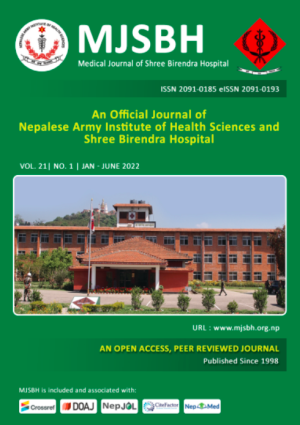Hemodynamic Responses to laryngoscopy and intubation: Comparison between Macintosh and McCoy laryngoscope
Keywords:
hemodynamic response, laryngoscopy, intubationAbstract
Background: Laryngoscopy causes exaggerated hemodynamics as tachycardia, hypertension, arrhythmias and may have deleterious respiratory, neurological, and cardiovascular effects. A very few studies have compared the effects of various types of laryngoscope blades on hemodynamic response to laryngoscopy and intubation.
Methodology: A prospective randomized study was done to compare the hemodynamic response to using McCoy and Macintosh laryngoscope. A hundred patients, belonging to ASA grade I and II, between 15-65 years, requiring general anesthesia with intubation were included. A standard anesthesia technique was used. Both groups(n=50) were matched demographically. Mallampati grading, laryngoscopy and intubation time, laryngeal visualization grades, and hemodynamic variables at baseline were comparable.
Result: Following laryngoscopy there was significant rise in heart rate, systolic, diastolic and mean arterial pressure. The maximum change in HR compared to baseline was 20.45±9.29 vs 12.36± 7.28 (p<0.001) in Macintosh and McCoy groups. As compared to baseline maximum change in SBP (mean) was 7.92±10.53 vs 2.80± 6.73 (p= 0.005), the maximum change in DBP (mean) was 9.28±14.74 vs 5.72±7.37 (p= 0.130), the maximum percentage change in MAP (mean) was 8.62±12.07 vs 4.36±7.83 (p=0.039) in Macintosh and McCoy group respectively. Compared to variables just before insertion of the laryngoscope, maximum percentage rise in mean HR was 22.74±10.88 vs 16.40±7.43 (p=0.001), maximum percentage rise in SBP (mean) was 28.31± 13.22 vs 19.41±6.82 (p<0.001), maximum percentage rise in DBP (mean) was 30.00±15.25 vs 24.64±12.21 (p=0.003), maximum percentage rise in MAP (mean) was 28.89±11.55 vs 22.31±11.34 (p=0.05) in Macintosh and McCoy group respectively.
Conclusion: The hemodynamic response to laryngoscopy and intubation with McCoy laryngoscope was significantly less than with Macintosh laryngoscope.
Downloads
Downloads
Published
How to Cite
Issue
Section
License
Copyright (c) 2022 Medical Journal of Shree Birendra Hospital

This work is licensed under a Creative Commons Attribution-NonCommercial-NoDerivatives 4.0 International License.
This license enables reusers to distribute, remix, adapt, and build upon the material in any medium or format for noncommercial purposes only, and only so long as attribution is given to the creator.




